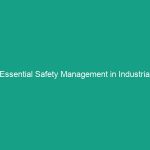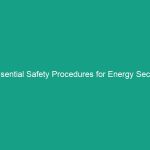Introduction
Good morning team,
Today, we’re going to discuss an essential topic that impacts all of us in the construction and demolition field: Essential Demolition Safety: Planning Guidelines to Avoid Critical Risks. Understanding and applying these Safety principles is crucial for maintaining a safe work Environment.
Demolition work carries inherent risks, and it’s our responsibility to recognize and mitigate these dangers. By the end of this talk, you’ll understand how proper planning and Safety Measures can protect you and your colleagues from potential Hazards.
Understanding Essential Demolition Safety
Essential Demolition Safety refers to the proactive strategies and practices designed to manage risks associated with demolition activities. This includes everything from planning and risk assessment to the execution of safe work practices.
Demolition is not just about tearing down structures; it involves careful planning to ensure that every aspect of the process is executed safely. Common misconceptions include the belief that demolition is simply a brute-force job, ignoring the complexity and potential dangers involved.
Key Hazards, Risks, and Safety Considerations
When it comes to demolition, several specific hazards can arise:
- Structural Collapse: One of the most significant risks during demolition is the possibility of structural failure, which can result in injuries or fatalities.
- Falling Debris: Tools, materials, and debris can fall from heights, posing risks to workers below.
- Hazardous Materials: Older buildings may contain asbestos, lead, or other toxins that require careful handling and disposal.
- Equipment Injuries: Heavy machinery can cause serious injuries if not operated correctly or if safety protocols are ignored.
Ignoring safety protocols can lead to severe consequences, including injuries, legal repercussions, and financial losses. It’s vital to be aware of these risks and take steps to address them proactively.
Best Practices, Procedures, & Actionable Advice
To ensure safety during demolition, consider the following Best Practices:
- Conduct a Risk Assessment: Before any demolition work begins, perform a thorough assessment to identify potential hazards and their implications.
- Develop a Demolition Plan: Create a detailed plan that outlines Safety Measures, equipment needs, and emergency Procedures.
- Ensure Proper Training: All workers should receive training on the specific risks associated with demolition and how to mitigate them.
- Use Personal Protective Equipment (PPE): Ensure that all workers wear appropriate PPE, including hard hats, gloves, goggles, and respiratory protection.
Let’s take a look at a real-life example: In a recent demolition project, a team failed to secure a wall before demolition. This oversight resulted in a partial collapse, injuring two workers. This incident highlights the importance of following safety protocols and thorough planning.
Regulations, Standards, and Compliance
Compliance with safety Standards is non-negotiable. Relevant Regulations include:
- OSHA Standards: osha provides guidelines for safe demolition practices that all employers must follow to protect their workers.
- ISO Standards: Implementing ISO standards for safety management systems can enhance safety protocols and compliance.
Understanding and adhering to these regulations not only ensures safety but also protects the company from legal liabilities. Compliance fosters a culture of safety and responsibility among all employees.
Employee Engagement & Discussion
Now I want to hear from you. What safety challenges have you encountered related to demolition? How can we improve our practices to enhance safety? Your insights are invaluable, and discussing these issues helps us create a safer workplace.
Conclusion & Key Takeaways
In summary, adhering to essential demolition safety practices is vital for protecting yourself and your colleagues. Remember the key points we discussed:
- Always conduct a risk assessment before starting any demolition work.
- Develop a comprehensive demolition plan outlining safety measures.
- Ensure all workers are trained and equipped with the necessary PPE.
- Stay compliant with OSHA and ISO standards to maintain a safe work environment.
By prioritizing these practices, we can significantly reduce risks and ensure a safer workplace for everyone. Thank you for your attention and your commitment to safety. Let’s work together to make our demolition projects as safe as possible!


